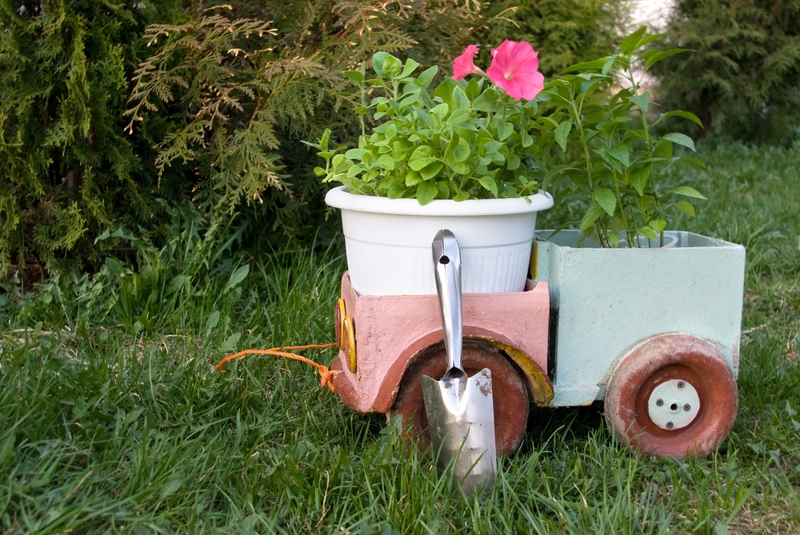Best Practices for Rubble Disposal
Posted on 16/11/2024
Rubble disposal is an essential aspect of construction and renovation projects. It involves the safe and efficient removal of debris to ensure a clean and organized work site. Improper rubble disposal can lead to environmental hazards and legal consequences. Therefore, knowing the best practices for rubble disposal is crucial. In this article, we will explore effective methods, the pros and cons, practical tips, and essential takeaways to manage rubble disposal efficiently.
Understanding Rubble Disposal
Rubble disposal involves the collection, transportation, and processing of construction waste materials such as concrete, bricks, tiles, and other debris. Proper management of rubble reduces environmental impact and promotes sustainability in construction activities.

Segregation of Materials
The first step in rubble disposal is to segregate materials. Sorting debris into different categories like metals, plastics, wood, and concrete allows for more efficient recycling and disposal. This step helps in minimizing the environmental impact and optimizes resource recovery.
Use of Skip Bins
Skip bins are large containers that are ideal for collecting rubble and construction waste. They come in various sizes to accommodate different volumes of waste. The use of skip bins ensures safe and efficient transportation of rubble to disposal sites or recycling centers.
Recycling and Reuse
One of the best practices for rubble disposal is recycling and reusing materials wherever possible. Concrete and bricks can be crushed and reused in new construction projects. Wooden debris can be repurposed for other uses. Recycling not only reduces the amount of waste sent to landfills but also conserves natural resources.
Hiring Professional Waste Disposal Services
Engaging a professional waste disposal service ensures that rubble is managed in compliance with local regulations. These services have the expertise, equipment, and resources to handle large volumes of construction waste efficiently. They also ensure that hazardous materials are disposed of appropriately.
Ensuring Safety During Disposal
Safety is paramount during rubble disposal. It is essential to use personal protective equipment (PPE) such as gloves, helmets, and safety boots to prevent injuries. Proper handling techniques should be employed to avoid accidents. Additionally, construction regulations and guidelines should be followed to ensure the safety of workers and the environment.
Pros and Cons of Rubble Disposal Methods
Analyzing the advantages and disadvantages of different rubble disposal methods can help in making informed decisions. Below are some pros and cons:
Pros:
- Environmental Benefits: Proper disposal methods reduce pollution and promote recycling.
- Safety: Professional waste services ensure safe handling and disposal of hazardous materials.
- Efficiency: Using skip bins and segregating materials streamlines the disposal process.
Cons:
- Cost: Hiring professional services and renting skip bins can be expensive.
- Time-Consuming: Segregating materials and ensuring proper disposal can be time-intensive.
- Regulatory Compliance: Adhering to regulations can be challenging for small projects.
Tips for Effective Rubble Disposal
Here are some practical tips to ensure effective rubble disposal:
- Plan Ahead: Ensure proper planning before starting the project, including identifying disposal methods and services in advance.
- Educate Workers: Train workers on the importance of segregation and safety practices during rubble disposal.
- Utilize Technology: Employ tools and software to track and manage waste disposal efficiently.
- Minimize Waste Generation: Implement construction practices that reduce waste generation, such as precise material measurements.
- Community Engagement: Participate in community recycling programs and educate the community on proper disposal methods.

Key Takeaways
Understanding and implementing best practices for rubble disposal is vital for the sustainability of construction projects. Segregating materials, using skip bins, recycling, and hiring professional services are essential steps. Safety should always be a priority during disposal activities. Weighing the pros and cons of different disposal methods can guide better decision-making. Employing practical tips ensures effective and efficient management of construction waste.
Conclusion
Proper rubble disposal is a critical aspect of construction and renovation projects. Following best practices not only ensures compliance with regulations but also promotes environmental sustainability and safety. Whether you are working on a small renovation or a large construction project, implementing these practices can make a significant difference. Plan ahead, educate your team, and engage professional services to manage rubble disposal effectively. By adopting these practices, you contribute to a cleaner, safer, and more sustainable construction industry.





